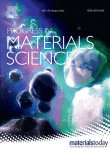
Additive manufacturing has attracted keen interest in the medical field in recent decades, especially for bone regeneration. Many additive manufacturing processes have been used to print medical devices such as implants, prostheses, and surgical guides, and for surgical planning in different medical fields, especially orthopedic, maxillofacial and dental surgery. Many materials can be manufactured by 3D printing with metal, ceramic, polymer or composite materials. Composite materials with organic and mineral components have been investigated to mimic bone functional and structural characteristics. In addition to the chemical composition, the modeling and optimization of the design can be optimized to enhance the biological and mechanical performance of the printed scaffolds.
This review presents a comparative evaluation of different material/additive manufacturing processes, and describes the best compromises for targeted clinical applications. The advantages and drawbacks of each additive manufacturing process are described in light of the biological results and essential properties expected by patients and clinicians.
Statement of significance: 3D (bio)printing appears to be an outstanding manufacturing route to revolutionize patient care with personalized medicine. Moreover, there are growing trends in the use of 3D printing in the medical education field and for surgical planning to alleviate surgeon practice and optimize esthetic results. Many reviews have described the growth of the different additive manufacturing techniques developed over time, their advantages and drawbacks and the work required to develop an accurate printable biomaterial fitting the 3D additive manufacturing process and the expectations of the final users and beneficiaries. In this review, an emphasis is placed on the expectations of patients and clinicians regarding specific final clinical applications in craniomaxillofacial, orthopedic or dental fields for a specific biomaterial/additive material (AM) process couple. The primary focus of this review is a comparative analysis of the 4 main additive manufacturing processes used in bone tissue engineering: extrusion-based material, stereolithography, selective laser sintering and inkjet 3D printing. Qualitative and quantitative assessments using a performance index are calculated according to expected criteria for patient care, user-friendly handling, and the affordability of the process. We propose a guideline for users to choose the most appropriate material-process couple.